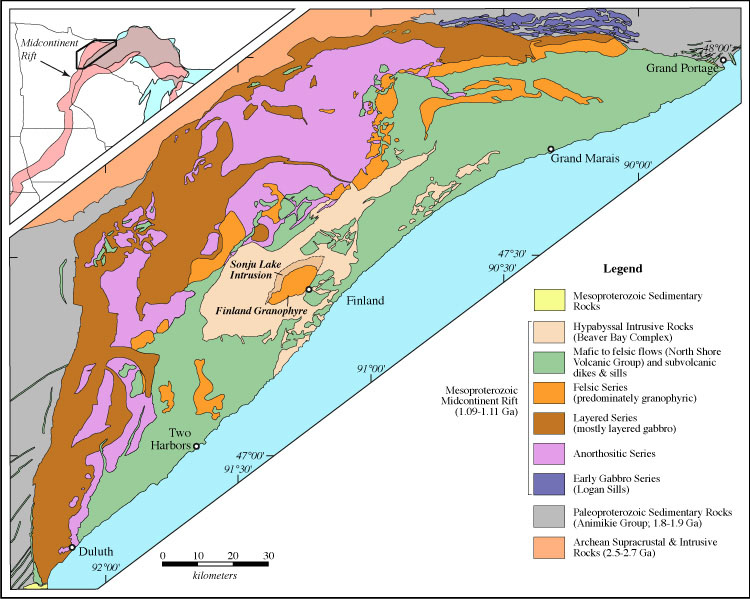|
Rift Geology
|
|
|
The Midcontinent
Rift System (MRS) in northern Minnesota consists of volcanic flows and intrusive
rocks that were emplaced during a relatively short interval (approximately
23 Ma) during the Middle Proterozoic (1109-1086 Ma).
The largely mafic igneous rocks of the MRS were emplaced
on older Archean granite-greenstone terranes and Early Proterozoic metasedimentary
rocks (greywacke, slate and iron formation).
Early studies (e.g., Grout, 1918) suggested that the layered
igneous rocks of the rift were part of a single lopolithic intrusion.
Recent studies (e.g., see Miller et al., 2002 and references
therein) utilizing detailed mapping, geophysics, geochemistry, and high-resolution
geochronology have established that the rift comprises multiple intrusions. The Sonju Lake Intrusion and associated Finland granophyre are part of the Beaver Bay complex that was intruded at a relatively shallow level within the volcanic sequence during the main magmatic stage. A detailed map of the intrusion can be found here . The following map was modified from Miller et al., 2001. |

Click here to download a high-resolution JPEG file of the map. |